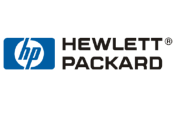How Secure Is Your Business Against Cyber Attacks?
Information security in Aussie businesses is taking a larger role in their day-to-day operations. As more and more of these businesses emerge and lean toward cloud systems, business owners are slowly realising that cyber attacks should be taken seriously. When the number of data breaches went up in the last few years, affecting even major multinational companies, Australian SMBs have learnt to instil a data security mindset in their organisations. However, cybercriminals are getting stronger and smarter. Sooner or later, these companies will become vulnerable to cyber attacks if they become complacent or if their information security process becomes outdated. To avoid such incidents as much as possible, certain measures can be taken to ensure your business and its data are well-protected.
Implement Zero Trust Security
When it comes to information security, trust in people should be set aside. All companies must implement the Zero Trust policy, which strictly enforces that no one should be trusted outside the perimeters and even inside in terms of network and systems access and control. This includes even the IT support team. As they say, no one should be above the ‘law’. Therefore, each personnel should go through permission procedures before they can access certain data, and the protocol must include several levels of authorisation. With the zero trust security model, everyone, including the higher management, should undergo verification before being given access to resources in the network.

Implement Deep Segmentation
Having the above zero trust architecture in place as part of the information security policy promotes the multi-layered security approach. Another must-have layer is the implementation of deep segmentation. In deep segmentation, the system or network is put into segments dedicated to different functions in the organisation. One example is a system purely for the Human Resource department’s use or a dedicated network housing all printers. Network segmentation provides solid security as well as easy and fast monitoring and control of the network. For example, the IT technical support team needs to troubleshoot a potential breach or issue in the network. Instead of having to go through the whole system, thereby potentially marking the other data not affected by the breach vulnerable, the team can instead just focus on the segment in question.
Invest in Container Security
An alternative to virtual machine (VM), containers are becoming more popular as the race in advanced technology ramps up. With more mature reusability and portability features, containers are being preferred by enterprises nowadays mainly due to their ease of use particularly in terms of application management. Of course, such technology is expected to be vulnerable to hackings if proper security policies are not implemented. Information security is a must in containers. Consider it as a ‘special wrapper’ that houses the enterprise applications. This wrapper, using systematic security layers surrounding the containers, will give business owners peace of mind knowing that their data is protected.
Emphasise on Automation
Cybercriminals are coming up with more sophisticated ways to attack nowadays. One of the popular forms of attacks are not triggered by humans but by bots. To be able to combat these, companies must keep up with the developments in IT. Unfortunately, traditional information security procedures are sometimes no longer sufficient, so a more advanced approach is needed to ensure that the companies are ahead of the race. And, this is where automation in information security comes in. Integrating automation is one way to modernise your information security systems. Automation has many advantages, hence more organisations move toward this. For instance, it helps increase efficiency. An IT support team can only manage at a certain level, and automation virtually adds ‘manpower’ to this team. With this benefit, it becomes a cost-effective way to provide business IT support.
Develop a Policy Engine
A policy is a set of rules or regulations that must be strictly followed at all times. In information security, a policy engine is a component in the system that implements these rules to determine how the organisation’s network should be created, planned, monitored, controlled and accessed. It can be based on multiple factors, such as the analytics of the organisation’s network as well as pre-programmed rules as determined by the IT security team. The policy engine also acts like a filter to the network. For example, before a third-party tool can be used within the network, it has to pass the rules set by the engine. Another example is a user’s authorisation to access a part of the network. The user must have the proper credentials passed by the policy before it can be given permission.
The Final Word
Cyber attacks may seem daunting at first. While it is a relief knowing that there are ways to counter-attack them, business owners can find themselves overwhelmed with all the information that is available. So how would you know which ones would give your business the utmost protection? Having an IT audit regularly is the solution. An IT audit would evaluate whether the security that your business have in place is sufficient to protect your data and identify which security protocols you need to prioritise more over the others. With IT audits, you can rest assured that you will be guided on designing an information security system for your business. It’s one of the smart investments you will make.




























